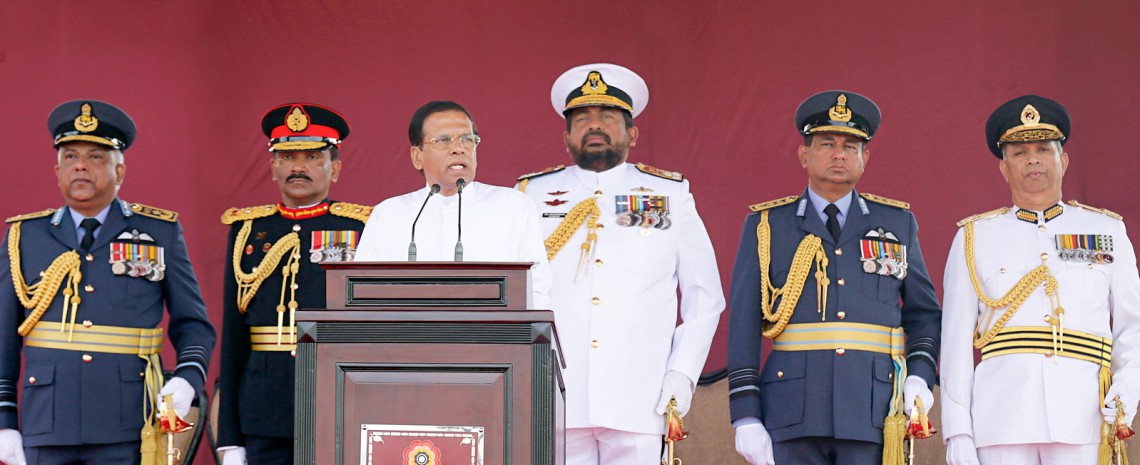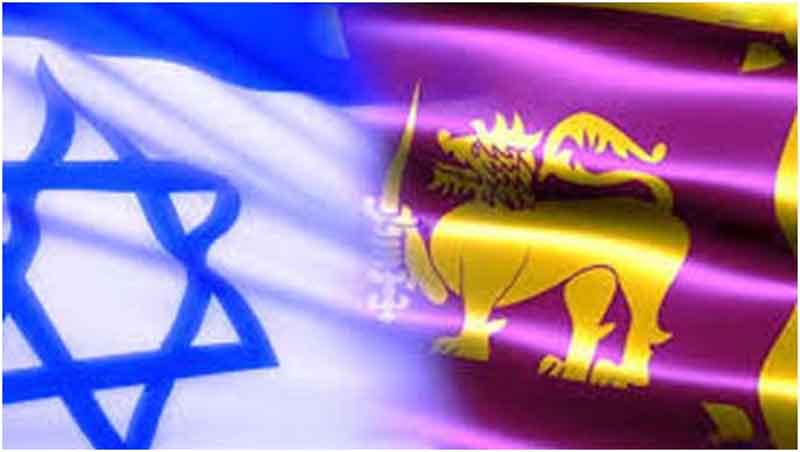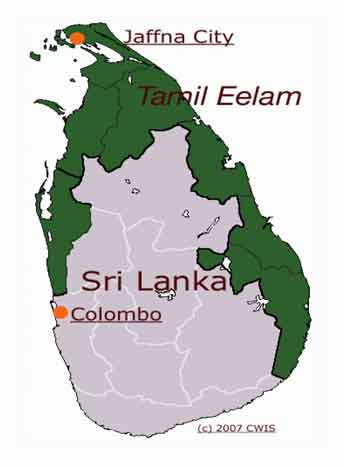
Since 2015, Sri Lanka has been governed by a Unity Government comprising of the Sri Lanka Freedom Party of the President and United National Party of the Prime Minister. In the run up to local elections (scheduled in February 2018)preserving the presidency and the power and privilege it brings with it has become a political necessity for the Sri Lankan President.President Sirisena’s non-committal stance on a second presidential term, having contested on a campaign pledge in 2014 of remaining in office for only one term, has drawn significant criticism from electoral bases which brought him to power in 2015.All debate on the constitutional reforms process has taken a back seat.The president has instead directed his attention on the UNP (United National Party), engaging in strong criticism of his partners in power even as the UNP leader (and Prime Minister)RanilWickremasingherequested his party members to desist from criticizing the president.
President Sirisena’s desire to hold on to power was discerned by the public following his application to the Supreme Court on the length of his term. His bid for extended leadership was quashed by the court which stated that his present term holds for5 and not 6years,as per 19thamendment. Despite this failed effort, his attempt to forgo rules instituted by his own government exposes his ambition to, not only strengthen his grasp on power but also create a SLFP (Sri Lanka Freedom Party) government in the coming years.Sirisena’s most recent comments, promising to make an SLFP government if the remaining 96 members of parliament on the side of former President Rajapakse re-joins his party, manifests his mounting disinclination to pursue a unity government with the UNP.
Signs of a looming economic crisis?
2016/17 reports confirmedthat the Sri Lankan Airlines Group has“recorded a loss of LKR (Sri Lankan rupees) 28 billion with an accumulated loss of rupees 170 billion as at March 31, 2017.” Technically insolvent, there are also claims that the government hopes to privatize the airline either partially or fully. Having given the Hambantota Port on a 99 year lease to the China Merchants Port Holdings, the government also signed a Memorandum of Understanding(MOU) with Beijing ‘for funding the Colombo International Finance City Building Complex on the reclaimed land of Colombo Port City Development Project and the Underground Marine Drive Tunnel connecting Airport Highway and the Marine Drive at Kollupitiya’.
Dr. Weerakoon of the Institute of Policy Studiesposits that “an estimated US$ 5.7 billion of International Sovereign Bonds and syndicated loans are scheduled for settlement over a period of three years, beginning in 2019”.As Sri Lanka faces its largest foreign debt-servicing requirement amounting to approximately US$ 15 billion between 2019 and 2022 it is bound to make the coming years politically fragile as well. In a recent public rally JVP (Peoples Liberation Front) opposition party leader Anura Dissanayake claimed that Sri Lanka’s debt had multiplied from Sri Lankan rupees 130 Billion in 1985 to 10,500 Billion Rupees today, and that the present government is no longer embracedby the public in the manner it once was in 2015.
External Ties?
January 2018 saw Sri Lanka signed a Free Trade Agreement (FTA) with Singapore. Hailed as one of the most comprehensive FTA’s in a decade, the government hopes that the FTA becomes a launching pad for a stronger integration with South East Asian Countries. Even though market access was not a barrier for Sri Lankan exports to Singapore in the past, Hundlani and Wignarajaargue that the FTA ‘covers goods, services, investments, trade facilitation, intellectual property rights and government procurement’ and also has ‘specific policies to simplify customs procedures and provisions to target the financial services, telecommunications, and e-commerce sectors’.
Sri Lanka also sought to strengthen ties with India. In January this year the Sri Lankan Ministry of Finance signed a MOU with the Exim Bank of India to develop the Kankesanthurai port into a commercial port. Additionally, 2018 witnessed the two countries signing an MOU to enhance cooperation in areas of cyber security and e-Governance.15th January also marked the fifth Indo-Sri Lanka Defence Dialogue, this time held in New Delhi.Projections of the Mattala Airport being handled by New Delhi is also likely given the government’s desire to settle another white elephant.
While regaining GSP+ from the EU in 2017 was a marked success for the unity government, since then it has not endeavored to appease western powers on speeding the reconciliation agenda. Moreover, if local elections showcase a one party domination – be that UNP or SLFP – foreign policy readjustments while unlikely; still could bein the offing.
Concluding thoughts
The pace of political reform in the country has also been slow. Despite some attempts in electoral reform including a mixed member proportional representation system combined with increased female representation in local bodies; archaic and discriminatory laws have been held fast by the President. Social media burst into a frenzy of disparagement following the President’s desire to carry on the 1955 law prohibiting women from purchasing alcohol in a tavern and selling or manufacturing alcohol.This clearly displays Sirisena’s belief that portraying himself as a “conservative leader” is likely to win more votes for his party in the coming elections. Party over national interest seems to guide his hand in 2018.
Relatives of the disappeared in the North carry on their vigil over lost loved ones even as the government grovels forward in dealing with the Bond Scam crisis. Pledges made on reconciliation appear to be overlooked or pushed aside as the game of power politics has once more taken center stage.
Sanjana Hattotuwa, a Researcher at the Centre for Policy Alternatives in a column to the Sunday Island astutelysums upthe incremental fall of public optimism regarding Sirisena and his Yahapalana(good governance) regime:
“His (President Sirisena’s) public stature in 2015 was one of selflessness, courage and indeed, greatness…Looking back, it is unclear whether that man ever really existed, or was instead a projection of our own desperation pegged to an individual who till then, to be either loved or reviled, wasn’t known for anything significant. And that’s precisely why he was a prime candidate to contest MahindaRajapaksa – Sirisena didn’t display at the time a vaulting ambition to seek or retain the kind of absolute power he was elected into. That is no longer the case.”
Shakthi De Silva, an independent researcher on Sri Lankan foreign policy has previously published in the Global – E Journal of the University of California, South Asia Journal, London School of Economics South Asia Blog, South Asian Voices and other platforms.















































